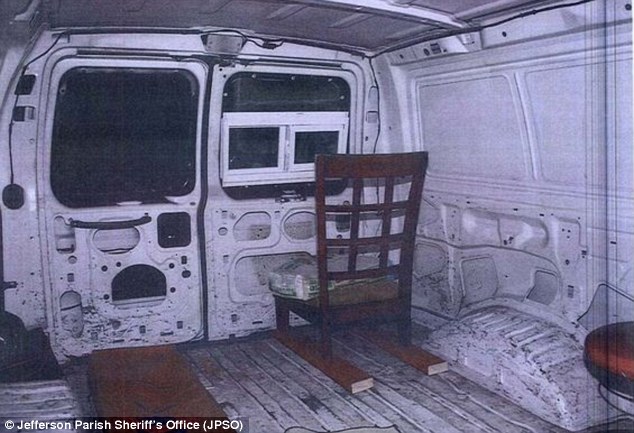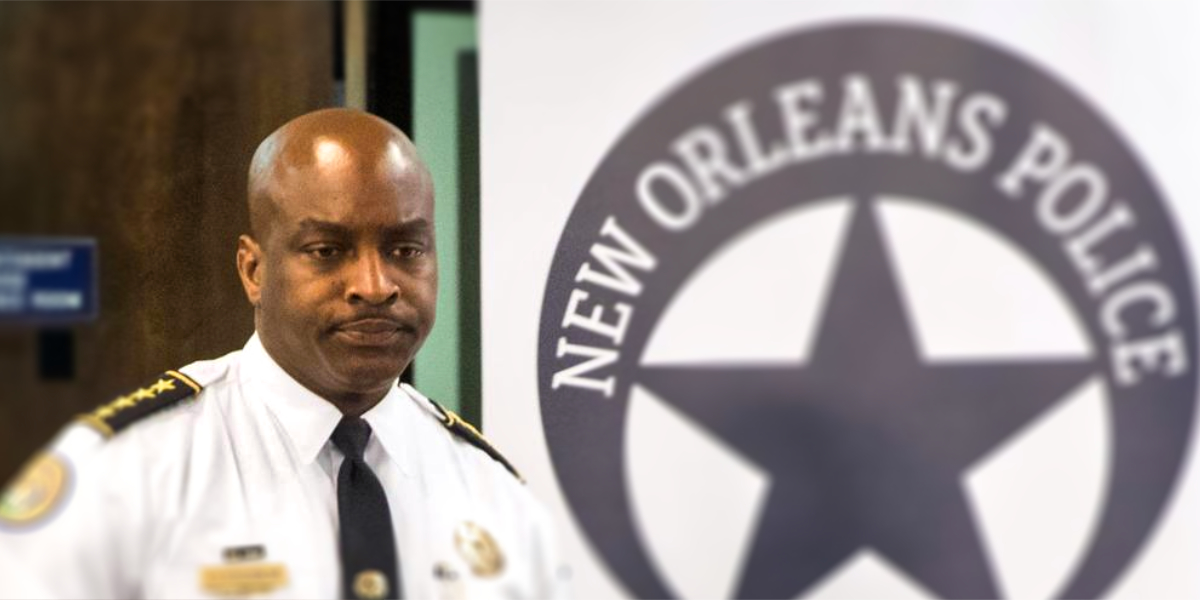NOPD says State Police no help with I-10 snipers
In April, the New Orleans Police Department’s Director of Communications asked me to stop referring to Interstate 10 shooters as serial snipers, and I complied. However, Truth-in-Journalism is something we need desperately today.
The Merriam-Webster dictionary defines “serial” as “performing a series of similar acts over time.” The word “snipe” is defined as “to shoot at exposed individuals from a concealed point of vantage.”
In other words, repeat offenders do not have to fire high-powered rifles from atop high-rise hotels to be called snipers.
Two weeks ago, on a Tuesday morning, a commuter from New Orleans East pulled his work van onto I-10 headed westbound. Between the exits of Read and Crowder Boulevards, two pickup trucks without license plates blocked the lanes in front of him and decelerated.
One of the two eased into the left lane and slowed more, dropping beside the work van, while his confederate in the truck directly ahead of the commuter reduced speed to ten miles per hour.
The commuter looked at the driver beside him as if to ask what was going on. Then, without answering, the driver, a man the commuter in the work van did not know, raised a handgun and opened fire.
One shot ripped through his driver’s side door, piercing a Covid mask hanging from the steering wheel. The commuter pressed his head back against the seat as a second shot busted his window and peppered his left hand with shattered glass.
When a third shot missed his face, the commuter pumped his brake pedal and ducked below his dashboard, grabbing his gun from the glove box. When he raised his head again, his assailants had gone.
Friday evening, June 18, around nine, a woman driving the Westbank Expressway found herself in a barrage of gunfire. Wounded, she drove herself to the hospital. As with all others interviewed, she did not recognize her attackers and recalled doing nothing to provoke road rage.
Last week, Wednesday evening, a woman driving eastbound on I-10 suffered a similar attack. Just after six, two miles from Read Boulevard near the Bullard Avenue exit, a round shattered her driver’s side window.
A later round punctured her door and pierced her leg, sending her to the hospital. Five weeks earlier, on May 10, another I-10 attack near the same exit sent another woman to the same hospital.
Mississippi resident Gage Bennet drove the car behind the woman. “All of a sudden, fireworks started to go off,” he told WVUE-TV. “I saw the road get it, concrete and stuff like that shooting up. Finally, I put two and two together and realized we just got shot at.”
Four hours after Wednesday’s attack, another motorist landed in the emergency room after an anonymous shooter blasted his car with gunfire on I-10 West near the Franklin Avenue exit.
The following day, a New Orleans Police Department representative told a WWL-TV reporter that, in the first six months of 2012, NOPD investigated twelve interstate shootings, but only three caused fatalities.
In January, District Attorney Jason Williams told the New Orleans City Council that New Orleans interstate highways hosted thirty shootings in 2021. Three victims, he said, died in those twelve months, suggesting the death toll has doubled this year.
New Orleans police responded to twenty-four interstate shootings in 2020, bringing the number of random attacks in thirty months to eighty-four and the number of sniper deaths to eight.
Now facing an average of three attacks per month, law enforcement must develop a plan to abate interstate shootings. To do so, they must first determine what forces they are fighting by proving whether or not these shootings are related.
According to August Palumbo, a former New Orleans Police detective and retired Special Agent with the Bureau of Alcohol, Tobacco, Firearms and Explosives, “If the shootings were unrelated, basic patrols and the visibility of stopping and citing traffic violators (police work 101) would slow down these shootings. A concentrated effort like that,” he said, “for a sustained period of months would eliminate it.”
These incidents could be connected since Louisiana has seen similar attacks before. These events are eerily reminiscent of the infamous “Beltway Sniper” attacks of 2002.
That year, John Allen Muhammad and Lee Boyd Malvo shot ten people on interstate highways between Washington, DC, and Tangipahoa Parish, where they left an Albany man for dead in the Hammond Square Mall parking lot.
In 2014, Jefferson Parish Sheriff’s deputies averted similar attacks in New Orleans when deputies pulled over what investigators called a sniper van, complete with a loaded rifle, scope, and silencer beneath chairs mounted to the back floorboard and facing sliding glass windows.

Retired officer and NOPD historian Gene Fields, author of Cops and Characters in the Big Easy, suggested such random freeway attacks could be gang initiations or hazing. If so, he said, the department’s resources are spread too thin for juvenile games.
Last September, an off-duty officer in an unmarked car was among the I-10 sniper victims. The policeman survived but never saw the gunman who shot him in the head.
August Palumbo told me, “NOPD doesn’t patrol the interstates. The motorcycle division did years ago, but they serve only as escorts now.”
Before he retired, the United States Treasury Department awarded August Palumbo the Medal of Merit. In addition to multiple commendations for bravery in service, he also received the ATF Distinguished Firearms Expert award. Today, he is a consultant to the National Association of Federal Agents.

“NOPD has eliminated or decimated their key specialty units, like Traffic, Vice, Narcotics, Intelligence, and Auto Theft,” Palumbo explained. “The only specialized detective unit left is Homicide. The Robbery and Burglary divisions no longer exist. Detectives spend their time writing reports with minimal time for follow-up.”
“New Orleans was ahead of the curve in defunding the police,” he said. “Death by a thousand budget cuts.”
Last week, City Council president Helena Moreno, who also serves on the Criminal Justice Committee, told reporters she would like to see state law enforcement agencies patrolling interstate highways within city limits.
“With the shootings on the interstates and the time officers spend dealing with wrecks and disabled vehicles, it doesn’t make sense for them not to help, even if it’s just DPS showing up to respond to disabled vehicles and accidents,” she said.
NOPD Superintendant Shaun Ferguson told Moreno that requests for help from the head of state police have been futile, saying state police did not have enough people to help. Likewise, the New Orleans Police Department has little capacity to solve the problem. Presently, the department has fewer than a thousand officers, with most patrol personnel working 12-hour shifts.
Statistics from the Metropolitan Crime Commission, a government watchdog group, confirm NOPD is beyond overloaded.
There were 224 total shootings within city limits in the last six months. That number is 98% more than in 2019, when they had more officers on the force.
There have been 140 homicides this year, 150% more than in 2019, and 51% more than in 2021. This week, police investigated three homicides on separate days in the same block in New Orleans East.
NOPD is also investigating 147 carjackings and 247 robberies this year.
Serial shooters are the bailiwick of the Louisiana State Police, but I-10, like all thoroughfares in the American Interstate Highway System, is a federal highway sustained by the Department of Transportation and Development. If neither NOPD nor the Louisiana State Police have the workforce to protect motorists on I-10, it may be time New Orleans sought help from the Justice Department or the National Guard.

